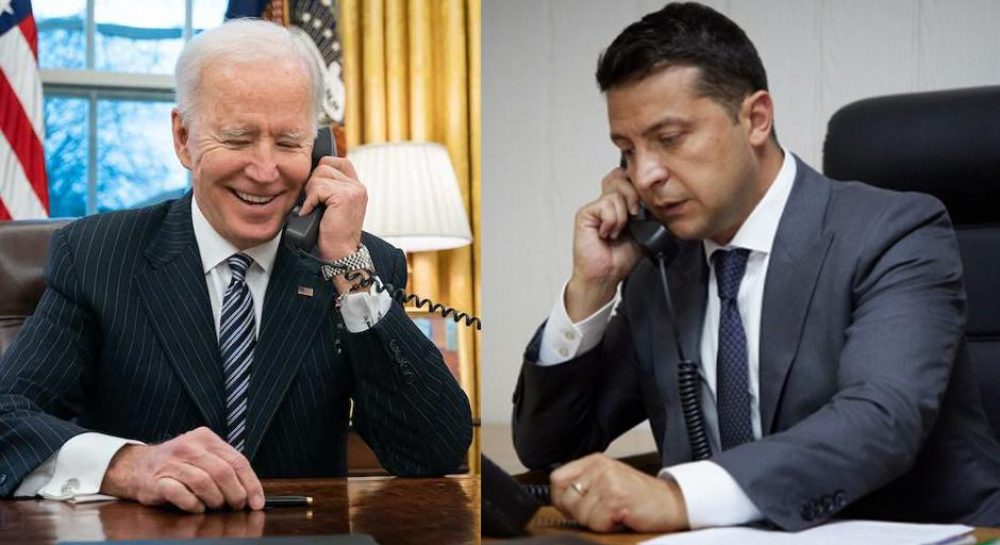During a recent discussion with New York Times columnist Nicholas Kristof, Administrator of the United States Agency for International Development (USAID), Samantha Power, touted her organization’s push to guarantee transparency for US taxpayer funds sent to Ukraine.
“We are involved in funding efforts at ensuring judicial integrity, which is intrinsically important to building Ukraine’s democracy and its integration plans to get into Europe,” Power declared, adding USAID’s work in Ukraine was “also really important in terms of assuring the taxpayer, the American taxpayer, that they’re resources are well spent.”
Even a year into the war, Ukraine continues to build out Diia – an e-government app that gives citizens access to more than 120 gov services.
I spoke with @NickKristof about @USAID’s support of this groundbreaking app that plays such an important role in transparent government. pic.twitter.com/pZTCZYaZHN
— Samantha Power (@PowerUSAID) February 24, 2023
While innocuous on the surface, Power’s comments revealed a great deception the US government is currently waging against the American public. In the roughly 16 months since Russia’s February 2022 escalation of the Ukraine conflict, the US government has approved several multi-billion dollar spending packages to sustain the Kiev military’s fight against Moscow.
Though many Americans likely believe that US dollars allocated for Ukraine are spent directly on supplies for the war effort, the lead author of this report, Heather Kaiser, conducted a thorough review of Washington’s budget for the 2022 and 2023 fiscal year and discovered that is far from the case.
US taxpayers may be shocked to learn that as their families grappled with fears of Social Security’s looming insolvency, the Social Security Administration in Washington sent $4.48 million to the Kiev government in 2022 and 2023 alone. In another example of bizarre spending, USAID paid off $4.5 billion worth of Ukraine’s sovereign debt through payments made to the World Bank — all while Congress went to loggerheads over America’s ballooning national debt. (Western financial interests including BlackRock Inc. are among the largest holders of Ukrainian government bonds.)
Though it is nearly impossible to calculate the total sum of US tax dollars sent to Kiev, Kaiser was able to perform an independent audit of Washington’s proxy war in Ukraine through a careful search of open source data available on the US government’s official spending tracker.
Kaiser reviewed all the funding allocations in which Ukraine was listed as the “Place of Performance” for fiscal years 2022 and 2023. Additionally, she discovered supplementary funds were sent to Kiev by listing Ukraine as the “justification” for spending, rather than the location where the money was physically sent.
Calculating the total dollar amount that the US has given to Ukraine is incredibly challenging for multitude of reasons: there is a lag in reporting expenditures; covert money given by the CIA (Title 50 Covert Action) won’t be publicly disclosed; and direct military assistance in the form of military equipment is not calculated in the same manner as raw cash. The Pentagon recently admitted to an accounting error revised up to 6.2 billion dollars. Despite this, Kaiser submitted a request to the Department of Treasury asking them to disclose the total dollar amount of US taxpayer support for Ukraine. Treasury has not responded at the time of publication.
Though Kaiser was able to search through pages of reported spending, the US government has yet to conduct an official audit of its funding for Ukraine. What’s more, there is currently no limit to how much Washington can send to Kiev.
In the absence of dedicated official scrutiny of Washington’s spending in Ukraine, The Grayzone has produced an independent audit of US tax dollar allocation in the country.
Among the many troubling contracts we discovered was a $4.25 million payment from the Pentagon to a military diving contractor that a member of the Senate Armed Services Committee has described as a “fraudulent company.” The US government asserts the payment covered the company’s delivery of explosives equipment to Ukraine.
So how exactly was that money put to use? And why has Congress so far refused to implement any program to track these shady weapons deals?
Unfortunately, the “justification” for contracts like these often consists of just a brief paragraph — or worse, a single sentence. Little little information is available that documents precisely how the funds were spent down to the dollar and item.
Beneficiaries of USAID’s Ukraine aid: Polish NATO lobbyists, a private equity firm, rural Kenyans, a TV station in Toronto
USAID awarded $21.8 billion to Ukraine throughout fiscal years 2022 and 2023, roughly 41 percent of the 53.4 billion it spent during that period. Mysteriously, a portion of USAID funding earmarked for Kiev was sent to Kenya and Ethiopia via other agencies, with the award description stating projects in Africa were “partially funded with response funds and Ukraine supplemental funds.”
USAID sent $4.5 billion to Ukraine via the World Bank to pay off Kiev’s debt and fund various social programs, including government pensions. USAID made a total of $21 billion worth of direct payments to the World Bank in fiscal years 2022 and 2023 (9.1 Billion and 11.9 Billion, respectively), more money than all of the funding Washington sent to the bank between fiscal years 2008 and 2021 combined. The $4.5 billion allocated for Ukraine funded programs directed by the bank’s International Development Association and International Bank for Reconstruction and Development.
Read the rest at The Grayzone.
Support The Grayzone here.


